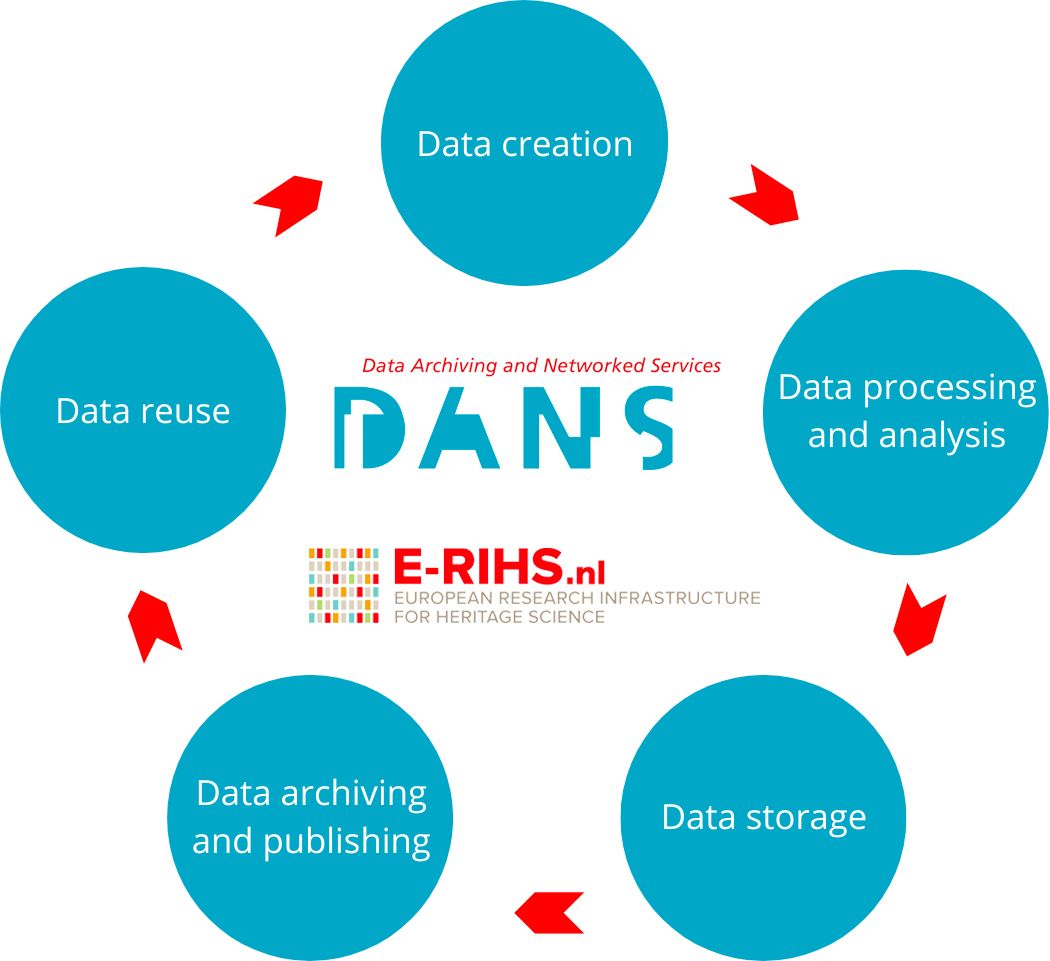RDM lifecycle as a guide
E-RIHS.nl aims to make science methods, research facilities, expertise and data from movable heritage, monuments and archaeology more accessible. Through interviews and a survey, a large number of (potential) E-RIHS.nl partners from the field of heritage science were surveyed about the current state of affairs and their wishes for the future with regard to finding, sharing, archiving and reusing data. The survey was structured using a research data management lifecycle as a guide. This consists of the phases data creation, data processing and analysis, data storage, data archiving and publishing and data reuse. It also looked at organisations in terms of policy, support and collaboration.
Two sides come together
E-RIHS.nl partners include museums and cultural heritage institutions as well as universities and natural science research facilities. These two sides of the field are increasingly coming together, which is why it is important that a network like E-RIHS.nl facilitates these collaborations and provides support for both types of needs. Linking data and facilities requires some major developments in the current infrastructure. The partners are happy to contribute to this.
Optimal infrastructure for impactful data
Thanks to increasingly advanced analytical techniques, more and more data are also becoming available in heritage sciences. Good data management is then crucial. Reason for E-RIHS to provide an optimal data infrastructure (DIGILAB) that allows all partners to easily exchange data, tools and expertise. FAIR data are obviously also important for the network. After all, these make a greater impact and can be better shared and reused.
Training
Besides the inventory, more focused on the technical data infrastructure, an initial bootcamp was also provided on research data management. This was aimed at training (prospective) specialists and data stewards specifically for the heritage sciences. A second training course is currently being developed.

